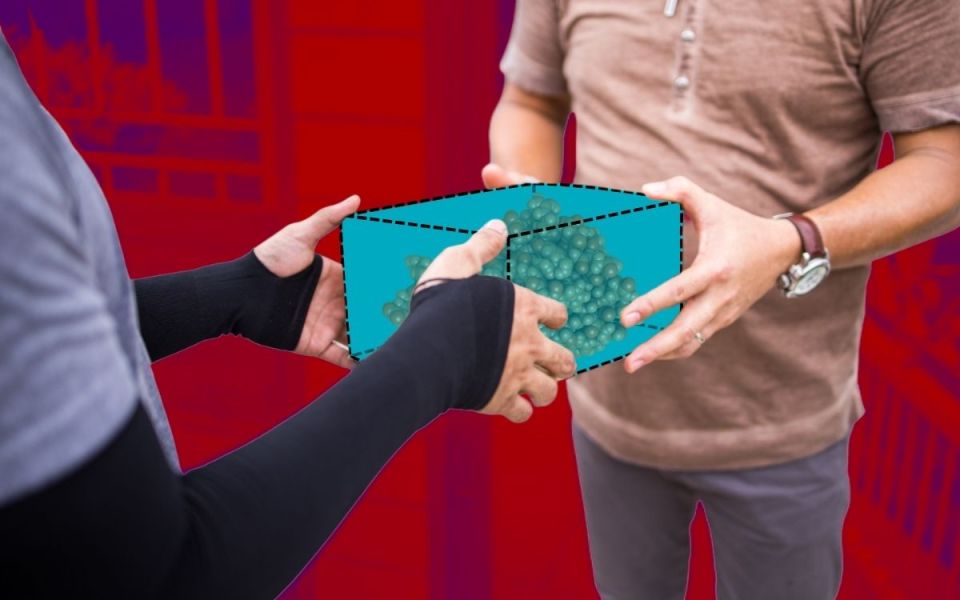GRID VIEW
Listen to the article here:
Have you ever had a headache that you couldn’t shake, even for hours or days? One that may make you nauseous or unable to function? Then you may have had a migraine. And you’re not alone. A survey from 1990 to 2010 found that about 15% of the world’s population have migraines each year. That makes migraines the third-highest source of long-term injury! Women are around twice as likely to get migraines than men.
Migraines can be broadly lumped into two categories based on frequency, episodic and chronic. People with episodic migraines experience between 0 and 14 days with migraines a month. More than that and the condition is called chronic migraine. The difference between these two categories isn’t set, and a small percentage of those with either condition may evolve or degrade into the other. Either way, migraines are debilitating. They last hours to days and may be accompanied by an aura: a visual indication of an impending bad day.
The exact underlying causes of migraines are unknown, but there are some areas where intervention is possible. The pain and debilitating effects of migraines are caused, at least in part, by something called vasodilation. This is just a fancy term for when blood vessels expand, allowing more fluid to pass through. Vasodilation can occur for many reasons, but one of the main suspects in migraines is a protein called CGRP (calcitonin gene-related peptide, for the curious). This protein acts on the coverings of the brain, causing vasodilation that inflames this area. It is unclear exactly what happens after this, but the end result is debilitating pain. It has even been shown that injecting CGRP can cause a migraine to start.
Interventions against this vasodilation are possible through a couple of different routes. One of the classic ways of tackling a migraine is through a medication called Dihydroergotamine, or DHE for short. This medication causes some arteries in the brain to constrict, counteracting the vasodilation from CGRP. This can “interrupt” the migraine and provide relief. This relief often effectively ends the migraine. DHE has been available for injection in the US for some time, though in other countries it is available as a nasal spray. Researchers are working to get approval for this method in the US as well.
Another intervention being researched is stopping the vasodilation at the source. There is ongoing research in stopping CGRP from acting on the brain coverings at all. This is a new avenue that may help provide migraine relief with fewer side effects. Research in this field is also ongoing, ask us about the different ways you can help provide research insight into relief for this real headache of a condition.
Written by: Benton Lowey-Ball, B.S. Behavioral Neuroscience
Sources:
De Matteis, E., Guglielmetti, M., Ornello, R., Spuntarelli, V., Martelletti, P., & Sacco, S. (2020). Targeting CGRP for migraine treatment: mechanisms, antibodies, small molecules, perspectives. Expert review of neurotherapeutics, 20(6), 627-641.
Marmura, M. J. (2018). Triggers, protectors, and predictors in episodic migraine. Current pain and headache reports, 22(12), 1-9.
Shafqat, R., Flores-Montanez, Y., Delbono, V., & Nahas, S. J. (2020). Updated evaluation of IV dihydroergotamine (DHE) for refractory migraine: patient selection and special considerations. Journal of Pain Research, 13, 859.
Vos, T., Flaxman, A. D., Naghavi, M., Lozano, R., Michaud, C., Ezzati, M., … & Harrison, J. E. (2012). Years lived with disability (YLDs) for 1160 sequelae of 289 diseases and injuries 1990–2010: a systematic analysis for the Global Burden of Disease Study 2010. The lancet, 380(9859), 2163-2196.
Incredibly, migraines are the third most prevalent disease, and the sixth most disabling disease in the world. In the US alone, 18% of women, 6 % of men, and 10 % of children experience migraines. It comes as no surprise that 1 in 4 US households include a migraine sufferer.
Why are migraines a big deal? Unlike normal episodic headaches, migraines are a chronic disease that significantly diminish quality of life. Migraines can be excruciatingly painful, debilitating, and often incapacitating for hours or even days.
Migraines have four stages: prodrome, aura, headache, and post-drome, though you may not experience all stages. Prodrome is usually one or two days prior to a migraine, you may notice changes or sensitivities that warn of an impending migraine such as: constipation, mood changes, food cravings, neck stiffness, frequent yawning, and increased thirst and urination. Auras are symptoms of the nervous system, typically visual disturbances, however they can also be sensory, motor, or verbal disturbances. Luckily, most people have migraines without aura. During the Headache attack you may experience a throbbing or pulsing pain on one or both sides of your head. Extreme sensitivity to light, sounds, smells, or touch. These can be accompanied by nausea and vomiting, blurred vision and lightheadedness. Post-drome is the final phase which lasts for about 24 hours after the headache attack. During post-drome you may feel drained, confused, moody and weak.
Once thought of as a psychological disorder, migraines are now considered a chronic neurological disease with many triggers. A trigger sets off events that excite a nerve which releases a variety of neurochemicals and causes cranial blood vessels to swell and inflame.
You’ve probably already heard about the many possible migraine triggers, but maybe you’re not quite able to nail down what’s triggering your migraines. Consider the overload of information your brain consumes daily: everything from social media, to millions of breaking news stories. Your brain literally can’t get a break from the constant intake of new information. This increase of information causes stress on the brain, which can reach an overload point and shut down the prefrontal cortex; thus triggering a migraine.
What should you do if you are experiencing migraines? The best thing to do is see your doctor. Why? If you are having true migraines, over the counter medications usually just don’t work, and taking them for migraines several times a month can lead to overuse. This will almost certainly cause rebound headaches! It’s a vicious cycle; don’t get stuck in it! Your doctor can help you figure out the right treatment for you.
Fortunately for migraine sufferers there is a bright future ahead, and I don’t mean in a bright light during a migraine attack kind of way. Clinical trials are showing promising results for new migraine treatments. You can be part of the future of migraine treatments by volunteering for a migraine clinical trial! Call today to get involved! As always, there is no cost, and no health insurance required.





